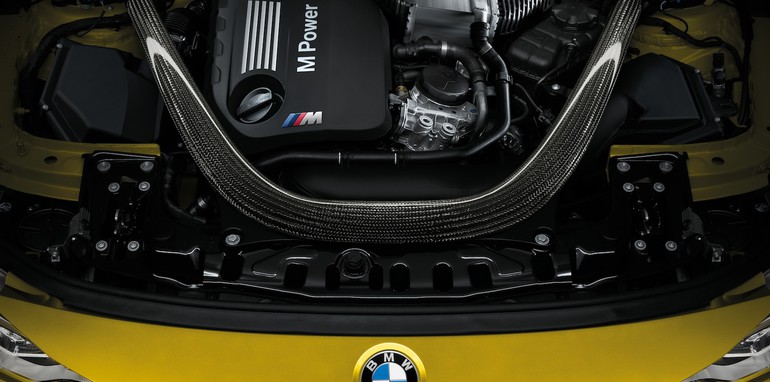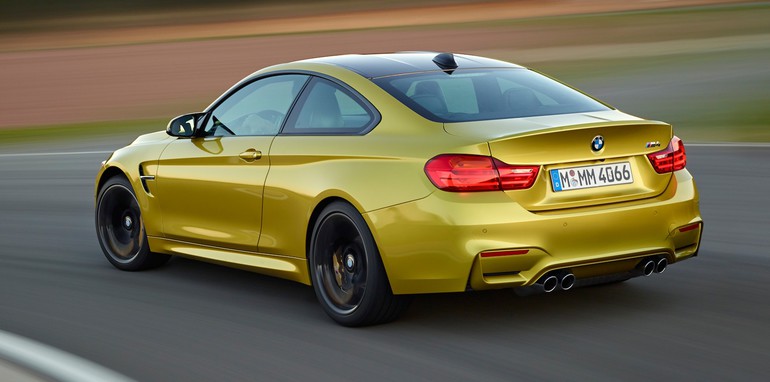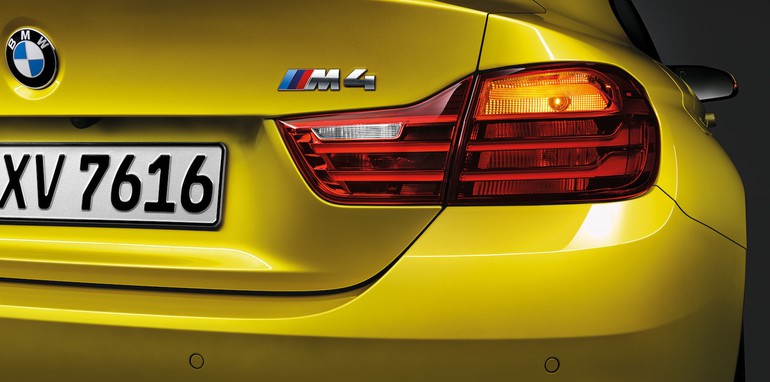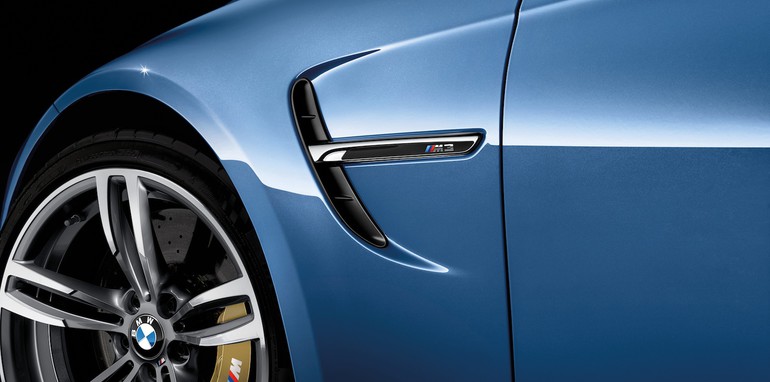317kW, 550Nm, 0-100km/h in 4.1sec
The BMW M3 Sedan and M4 Coupe have been unveiled, revealing a pair of all-new sports cars set to launch simultaneously and go on sale in Australia in mid 2014.
The first-ever generation of the BMW M4 nameplate and the fifth of the M3, the duo marks the iconic sports car’s first use of an inline six-cylinder engine since the second and third M3 generations.
Both powered by the same newly developed twin-turbocharged 3.0-litre six-cylinder engine, BMW claims the unit combines the high-revving nature of a naturally aspirated unit with the strengths of turbocharging.

Delivering 317kW between 5500-7300rpm and 550Nm between 1850–5500rpm, the direct injection closed-deck engine, which also features a forged crankshaft, redlines at 7600rpm.
The new engine betters the outgoing 309kW/400Nm naturally aspirated 4.0-litre V8-powered M3 – a car that revved out to 8400rpm – though is still 19kW and 50Nm off the pace of its 6.2-litre V8-powered Mercedes-Benz C63 AMG rival.
Weighing 1520kg in four-door five-seat guise (-85kg) and 1497kg with two doors and four seats (-83kg), however, both the new M3 sedan and M4 coupe trump the AMG by 0.4 seconds claiming a 4.1-second 0-100km/h when fitted with BMW’s optional seven-speed dual clutch automatic transmission.

The sprint to three figures takes a claimed 4.3 seconds when performed with the standard six-speed manual, which, along with being touted as more compact and 12kg lighter than its predecessor, now automatically blips the throttle on downshifts.
Top speed is again electronically limited to 250km/h, though, an optional M Driver’s Package will raise it to 280km/h if specified.
The EU6-compliant engine also achieves a reduction in fuel consumption and emissions of around 25 per cent, consuming 8.3 litres per 100km (8.8L/100km manual) on the EU combined cycle and emitting 194 grams of CO2 per kilometre (204g/km manual).

Apart from allowing drivers to take advantage of the latest M cars’ Launch Control function and three-mode Drivelogic system – offering Comfort, Sport and Sport+ settings – opting for the auto also presents a “Smokey Burnout” function. According to the German car maker, the enticingly named function permits drivers to “indulge in a degree of rear wheel spin while the car is moving at low speeds”.
Aiding such activities is an updated Active M electronically controlled rear differential said to improve stability and corner-exit acceleration.
Apart from matching carbonfibre reinforced plastic (CFRP) roofs – a first for four-door M3s – the duo’s weight loss is thanks to a number of lightweight chassis and body components including an aluminium power dome-equipped bonnet; aluminium front quarter panels; a CFRP front strut brace and drive shaft; and hollow output shafts.

Aluminium is also used for parts of the double-joint spring strut front axle and new five-link rear axle, including control arms and wheel hubs, with the result claimed to be a saving of at least eight kilograms.
Sharing similar exterior styling, the new BMW M3 and M4 each have a twin-bar kidney grille with black painted grille bars, large air intakes and ‘Air Curtains’, M gills with integrated ‘Air Breathers’, ‘twin-stalk’-style wing mirrors, muscular wheel arches and a rear diffuser. The M3 Sedan is also 91mm longer, 60mm wider and 23mm lower than its predecessor, the M4 Coupe 56mm longer, 66mm wider and 41mm lower than the previous two-door it replaces.
A quad-pipe exhaust system and smooth underbody are also common, though, the sedan features a lip spoiler atop its rear end while its coupe sibling gains a bootlid-integrated CFRP item.

Helping to accentuate the M cars’ 39mm-wider front and 64mm-wider rear track are lightweight 18-inch double-spoke M forged wheels wrapped in 255mm-wide front and 275mm-wide rear rubber. Available in either Ferric Grey or Black, 19-inch wheels are also optional.
Both the M3 and M4 come standard with BMW M compound brakes, with ventilated and cross-drilled discs at all four corners clamped by four-piston calipers up front and twin-piston units out back. M carbon ceramic brakes can also be specified as an option as can Adaptive M suspension.
Inside, the two cars are mirrored with a chrome-trimmed M leather multifunction steering wheel with contrast stitching, an Anthracite headliner, M-design instruments and an M gearshift lever, door sill finishers and footrest.

Featuring an illuminated BMW ‘M’ logo on the seat backs for the first time, the standard M sports seats are optionally available with electric adjustment and heating functionality.
Along with its additional doors and greater seating capacity, the M3 comfortably wins the practicality battle offering 480 litres of luggage capacity versus the M4′s 445L.
Another feature on both models is a “track-specification” cooling system comprising an intercooler, radiator, water cooler and an electric coolant pump designed to cool the turbochargers’ bearing mounts when the car is stationary.

Options include LED headlights, anti-dazzle LED high beam assistant, active cruise control with stop and go function, active protection with attention assist, Professional navigation system, and a variety of BMW ConnectedDrive services.
A head-up display is also offered for both the M3 and M4, coming with additional M-specific functions including gear, revs and an optimum shift indicator, as is a free M Laptimer app. Developed by BMW M GmbH and operated via the cars’ iDrive Controller, the app allows drivers to monitor speed, longitudinal and lateral acceleration, revs, current gear (if automatic), steering angle, accelerator position and fuel consumption.
BMW Individual items, including exterior paint finishes and interior leathers and trim elements, will additionally provide owners with further personalisation.
The new BMW M3 sedan and M4 coupe are now being produced at BMW’s Regensburg and Munich plants respectively, in line with production of the standard 3and 4 Series ranges.





![Top 20 Used Cars to Avoid Buying in Kenya – [PHOTOS]](../../../blog/wp-content/uploads/2013/11/top-used-unreliable-cars-to-avoid2-80x60.jpg)

![Top 20 Used Cars to Avoid Buying in Kenya – [PHOTOS]](../../../blog/wp-content/uploads/2013/11/top-used-unreliable-cars-to-avoid2-100x70.jpg)





